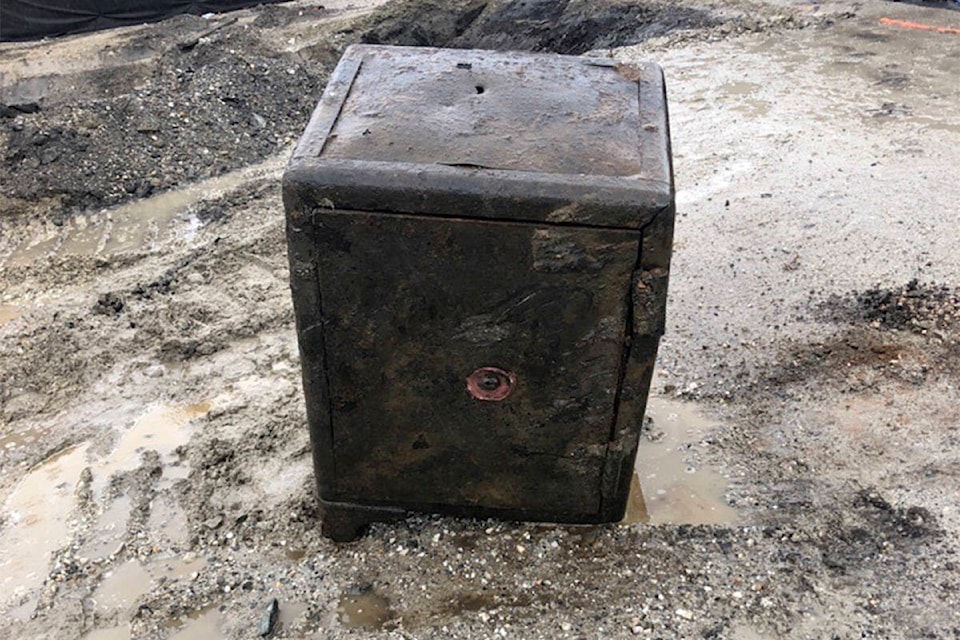Dana Hatherly | Special to the News
DAWSON CITY — Construction workers dug themselves into a conundrum when a crew found a mysterious safe buried eight metres underground in Dawson City.
An excavator unearthed the antiquated iron safe Aug. 4 during construction at York Street and Second Avenue while digging up ground for a new sewer lift station. The plans involve removing earth up to eight metres deep to build a pumphouse for Dawson City’s sewer system.
“We were just going about our day digging and all of a sudden we felt something hard under there,” said Eric Dagenais, an equipment operator with Chute Creek Contracting, a civil construction company based out of Penticton, B.C.
“There was a brass-looking thing in the front and, once we cleaned it off, we could see it was definitely a safe.”
A two-member crew — Dagenais and Jill Hislop — used the company’s heavy-duty excavator to lift the safe out of the ground. The crew was prevented by law from opening the safe or continuing to dig until given the go-ahead by proper authorities.
The safe remained shut despite missing its exterior door. Cardboard boxes could be seen through the cracks of the door.
The crew described the item as a “heat magnet” after people started jumping fences to spot the unconventional finding. The construction team said they witnessed one person standing on the windshield of a car to sneak a peek. Another woman crawled under the fence to get a closer look.
Dagenais said it’s normal to uncover old belongings and lost goods — such as bicycles, saw blades and shoes — during excavation. The safe was the most interesting thing he’s ever dug up, particularly given the history of the Gold Rush town.
The abandoned safe was recovered from the site of a historic warehouse district. At the height of the Klondike Gold Rush, Alaska-owned Northern Commercial Company — the largest trading corporation on the Yukon River — built a series of large storage facilities that were destroyed by fire in 1951. The block later became an institutional and residential area.
The old safety-deposit box was picked up Sunday afternoon for secure storage at Dawson City’s public works department.
Officials are treating the safe as it if could contain hazardous materials.
Although the department is taking precautionary measures, Mark Dauphinee, the town’s superintendent of public works, said he doesn’t believe the safe contains anything of real value.
“I know it’s a safe, and it’s been damaged, but there seems to be stuff inside,” Dauphinee said.
Without any external markings or identifiers about the manufacturers or location of origin, Yukon government archeologist Ty Heffner said there is nothing remarkable about the finding. He presumed someone in Dawson owned or used the safe before it was abandoned or disposed as rubbish.
“Any time an object like that is found, a lot of the historical significance and interpretive value is the story behind it,” Heffner said.
However, the lack of answers regarding the security box’s contents deter from its potential value.
“I’m hoping that there actually is something inside,” Heffner said. “That would satisfy peoples’ curiosity while at the same time helping us understand a bit of the story of the safe.”
The unidentified artifact has sparked curiosity and imagination among locals and tourists about the contents of the safe.
“I hope they find something, even if it’s old documents or old photographs,” said Curtis Smoler, a long-time Dawson resident.
“But gold would be the ultimate thing.”
If all goes according to plan, the city will bust open the safe as part of a public unveiling on Discovery Day.
Contact the Yukon News at editor@yukon-news.com
This story has been edited to correct the depth at which the safe was found.
